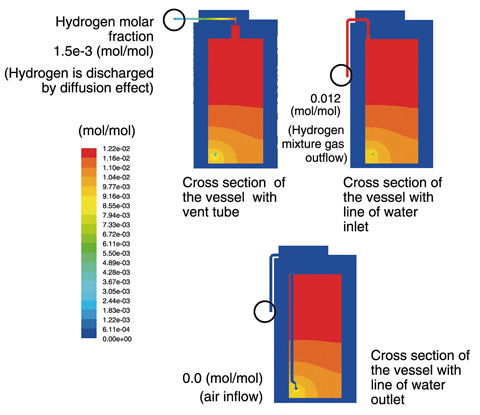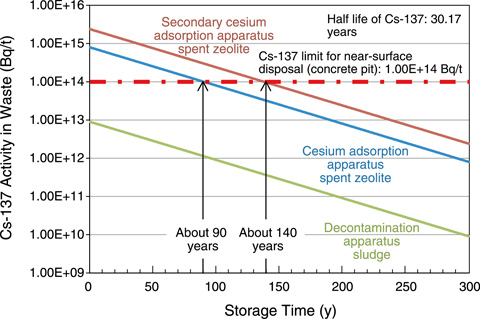
Fig.1-43 Analytical results for hydrogen diffusion in a spent zeolite vessel

Fig.1-44 Relationship between activity of secondary wastes and storage time
We are currently addressing the challenges presented by the decommissioning of the TEPCO’s Fukushima Daiichi NPS. In particular, R&D regarding long-term storage, processing, and disposal of secondary waste produced by treatment of contaminated water present important challenges.
Zeolite adsorption and coagulation-sedimentation methods are applied to remove radioactive nuclides, mainly radioactive cesium, from contaminated water. Currently, we are studying the characteristics of hydrogen generation in vessels, corrosion of the vessels, and related subjects to ensure appropriate long-term storage of spent zeolite and sediment. We are also investigating waste categorization, waste conditioning technologies, and so on to clarify future prospects for waste processing and disposal.
A spent zeolite vessel adsorbing cesium is detached from the radioactive water decontamination system. Although water is drained from the vessel before storage, combustible hydrogen could be produced via radiolysis of water absorbed in the zeolite and the small amount of water remaining at the bottom of the vessel.
Analytical simulation of hydrogen diffusion was conducted to estimate hydrogen concentrations under uniform rates of hydrogen production and heat generation without steam generation. The analytical results presented in Fig.1-43 illustrate that the air is inducted slowly into the vessel bottom through the outlet water pipe as a result of buoyancy effects, which in turn results from heat generation and density differences due to hydrogen generation in the vessel. The mixed gas (air and hydrogen) is released to the outside through the inlet water pipe and the vent tube. This thermal-hydraulic behavior prevents the hydrogen concentration from exceeding 4%, i.e., the lower hydrogen explosive limit.
Fig.1-44 illustrates the decrease of activity with storage time for waste generated by contaminated water treatment. Two types of spent zeolites are categorized as subsurface disposal waste based on their Cs-137 activities. Activities of such wastes will decrease with storage time and the zeolite wastes may be categorized as near-surface disposal waste in future. It is important to evaluate storage time, radioactivity, and chemical composition of waste form comprehensively to ensure safe and rational management of waste produced by the accident at Fukushima.